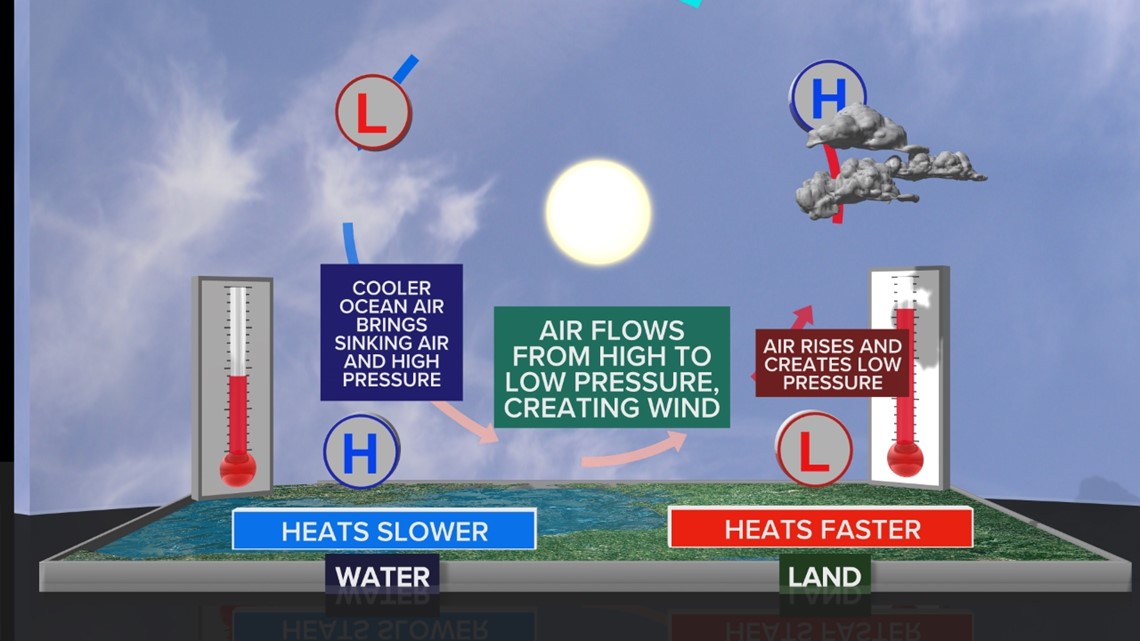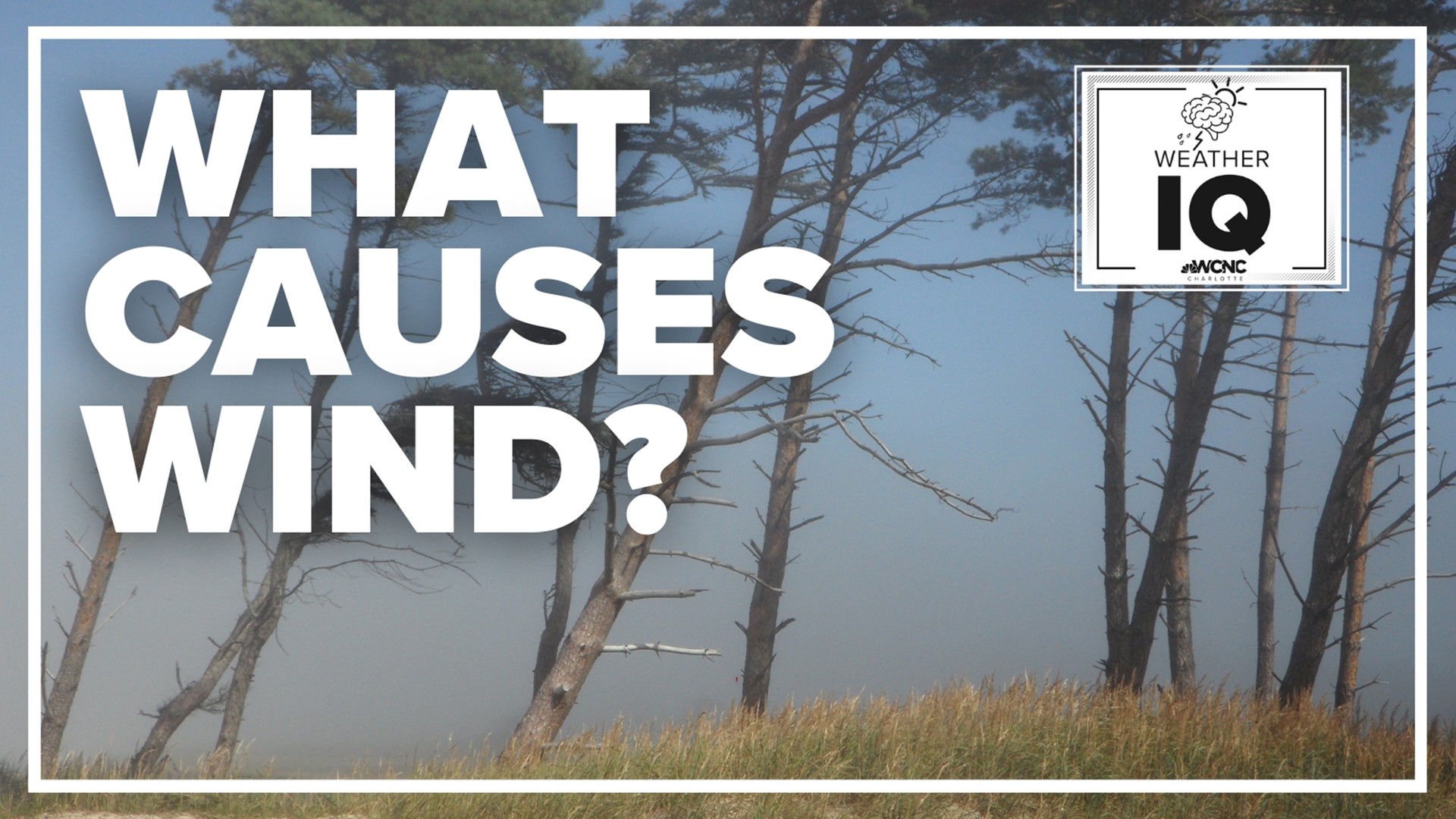CHARLOTTE, N.C. — March and April are the windiest months of the year in most of the southeastern United States, including in Charlotte.
How wind forms
The best definition for wind is: air that is in motion. Wind is caused by changes in air pressure. Wind flows from high to low pressure.
For example, when the difference between high and low pressure is low, the wind will be light. This is a low-pressure gradient or “change in pressure."
But the bigger the contrast, or gradient, between these battling airmasses, the faster air will flow from the area of high pressure to the area of low pressure.
The air pressure wants to release the extra pressure from the area of high pressure and thus blows into the area of low pressure. Wind is nature's attempt to balance the inequalities in air pressure.
Understanding pressure vhanges on a map:
On a map, areas of pressure are divided by what is called an isobar. Much like the children's game Connect the Dots, each line connects points of equal pressure. The result is rings much like the rings seen on a tree. The center of circulation is in the center of those rings.
The closer the isobar lines, the stronger the wind.
Below is an example of weather model data of Hurricane Ian before landfall in Florida. A hurricane, with its strong and intense center of circulation, has a bunch of these lines expanding outward.
Other wind factors
The wind is also controlled by the Coriolis effect and friction.
Put simply, the Coriolis Effect makes things, such as air currents, traveling long distances around Earth appear to move at a curve as opposed to a straight line, according to NOAA. The rotation of the earth deflects the wind.
Friction from trees, buildings and other objects can slow it down. This is why winds are stronger in the mountains because there is less friction to slow them down.
The sea breeze:
On a smaller scale, wind can also form from the sun. As the sun heats the land quicker than water, the air warms, expands and then rises. Cooler air over the water moves in to replace it. This causes a wind called the sea breeze. This is why it is usually breezier by the ocean.
And at night, the roles are reversed as the land cools quicker than water. As the air blows back out to sea, this is called a land breeze.


A windy note:
The wind direction is a reflection of the direction in which the wind is arriving. So a southwest wind of 20 mph is a 20 mph blowing from the southwest to the northeast.
Windy facts:
- It is considered windy outside whenever wind speeds are sustained at 20 mph or greater
- Winds at 39-46 mph are a gale-force wind
- 55-63 mph are storm-force winds
- 74 mph or great are hurricane-force winds
- The strongest wind ever recorded in North Carolina and South Carolina was 138 mph. The measurement was made once during Hurricane Hugo in 1989 as well as during the Great Beaufort Hurricane at Cape Look Out in 1879.

